
“Like a flea hugging its dog” Richard Powers writes about touching a Coastal Redwood in The Overstory, I am certain no more accurate a description for anything has ever been written. Had I picked up this book prior to my visit to see these behemoths in person I may have thought this sentence pure hyperbole. After visiting I know now this phrase is as accurate as any scientific description.
The Tall
Reverence

Unlike Powers, I could not come up with the words to accurately describe what I witnessed exploring the beaten paths through Redwood National and State Parks in northwestern California. I ran out of seemingly fitting adjectives in the first 100 yards, eventually becoming speechless, neck craning back as far as biology would allow to try and take in the entirety of the tallest living organisms on the planet.

I can only describe the feeling of walking in this forest for the first time as similar to that I feel when walking into a cathedral. While I do not have religious beliefs and have never attended church for services other than weddings, I have been nearly overwhelmed with a sense of reverence and awe when walking into the great cathedrals of Europe and America. The beauty, the silence, the craftsmanship, this history takes your breath away and there seem to be no words of beauty and grace and magnitude adequate to describe what surrounds you. And this is exactly how I felt walking the path into the redwood forest. Not only does the forest leave you speechless, it actually absorbs speech. Once you are 25 feet or so away from the next group of hikers their sounds disappear. Children’s laughter is absorbed into the chest-high sword ferns carpeting the floor . Couple’s chatter is soaked up into the damp mosses, lichens, huckleberries dripping from branches far overhead. Dog barks are absorbed into the foot-thick sponginess of the tree bark. Entire groups of conversation are muffled by the feet of soil building in the connections of branch to trunk, wrapped in wren song and delivered in burbling packages down the streams so essential to this ecosystem.

Mosses cover branches of understory trees 
Creeks feed the trees from below 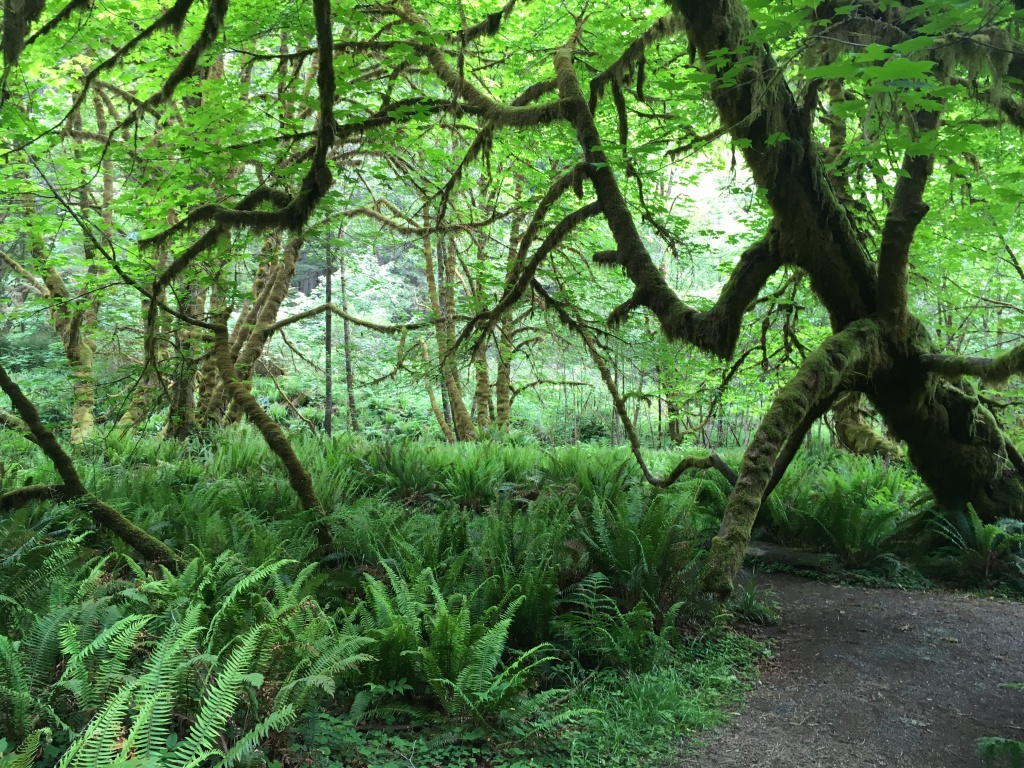
Sword ferns carpet the landscape 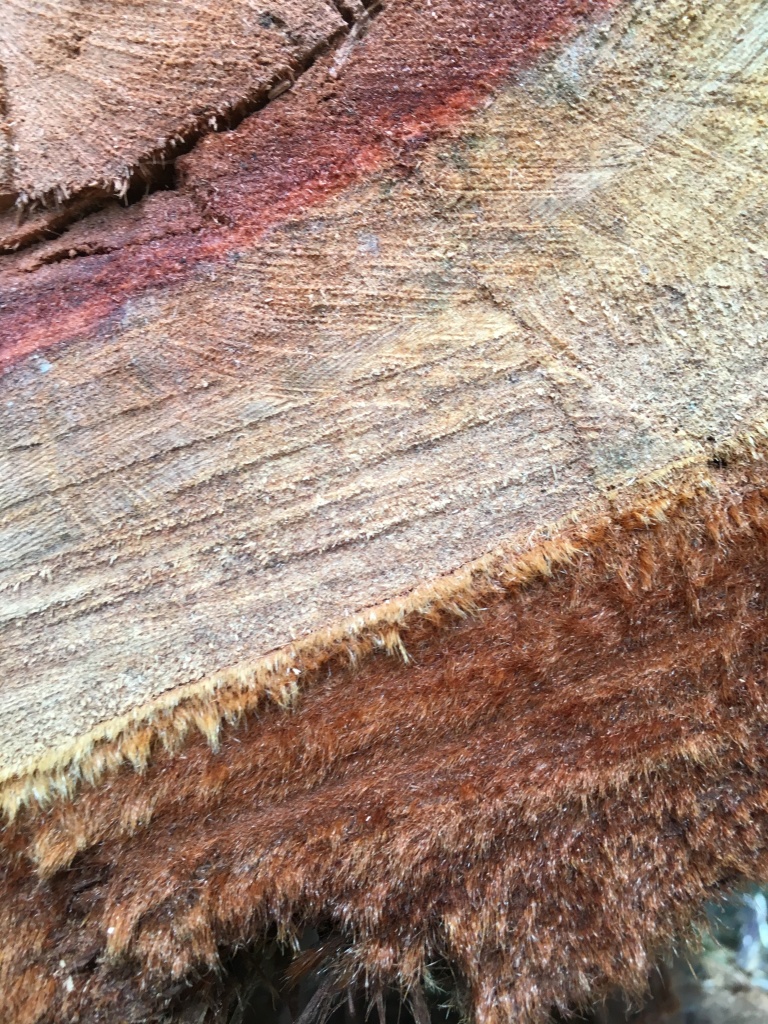
The soft, furry, spongy bark of a redwood can be more than a foot thick.
The Small
Insignificance
Part of the significance of these trees is how small they make you feel. Perhaps this is a function of growing where where the trees get a measly 150′ tall and 8 feet wide. Maybe those who grow up among the redwoods, do not feel as small. It is important to be reminded of our insignificance, of our short lifespan, of our smallness. It is humbling to realize these trees, some more than 1000 years old and more massive than anything else on the planet (3 times the length of the longest whale, wider at the base than two Volkswagon beetles) exist. We are just a blip on its lifespan. Blips of lifespans are shown in the tree’s rings after it falls, or has been fallen.
Evidence of drought and fire and flood and lightning can all be read in the rings of a tree stump. Except in this case, in this case the influence of man on these trees causes the stumps – so the damage we have wrought is never evidenced in the rings. We can see the rings because of our influence and interpret other details of its millennium of life, but we humans and our tiny masses and minuscule lifespan make no appearance at all. It is scary to learn what we tiny, infant humans have done to the populations of this ecosystem.
Small Remnants
You may think that when a redwood topples over naturally everything about the remnants would be enormous. And some of it is – the crater left in the landscape from the tonnage falling to earth from 30 stories above makes an impression. However, the pieces that are left, in many cases are firewood sized. This is because the tree is so massive when it hits the ground it shatters in a way the locals call ‘toothpicking’.
When these trees are harvested for that desirable redwood for our back decks and long-lasting outdoor furniture the soft undergrowth of rhododendrons, salal and understory trees, as well as all the huckleberries and ferns are bulldozed into the fall zone creating a mattress for the tree to land on, preventing the toothpicking and ruining of the lumber.

When the trees topple naturally the root masses that emerge are curiously alike. There are no long dangling roots, or half-fallen trees connected to the earth still by sinews of long anchoring roots. They are uniform and rootless. Much smaller than you would think. This is because under the surface of the soil the trees have formed a network of roots. Interconnected and interdependent. If one tree were to fall and take all of its roots with it – it would upend the entire forest. And so they have evolved weak points in their root zones, near the root flare, where the mass of roots disconnect from a tree. The tree falls leaving its roots for all others using it resulting in the uniform root mass now exposed.

Fauna
Even the large fauna feel small in this landscape. While I was laser-focused on the big trees, I was not even thinking about the wildlife we might encounter, even when we weren’t specifically looking for it. We happened upon a Roosevelt Elk just munching on ferns next to a well-travelled road. We saw a black bear cub and a fawn. We saw small birds, harbor seals and sea lions, river otters and many many snails and slugs.
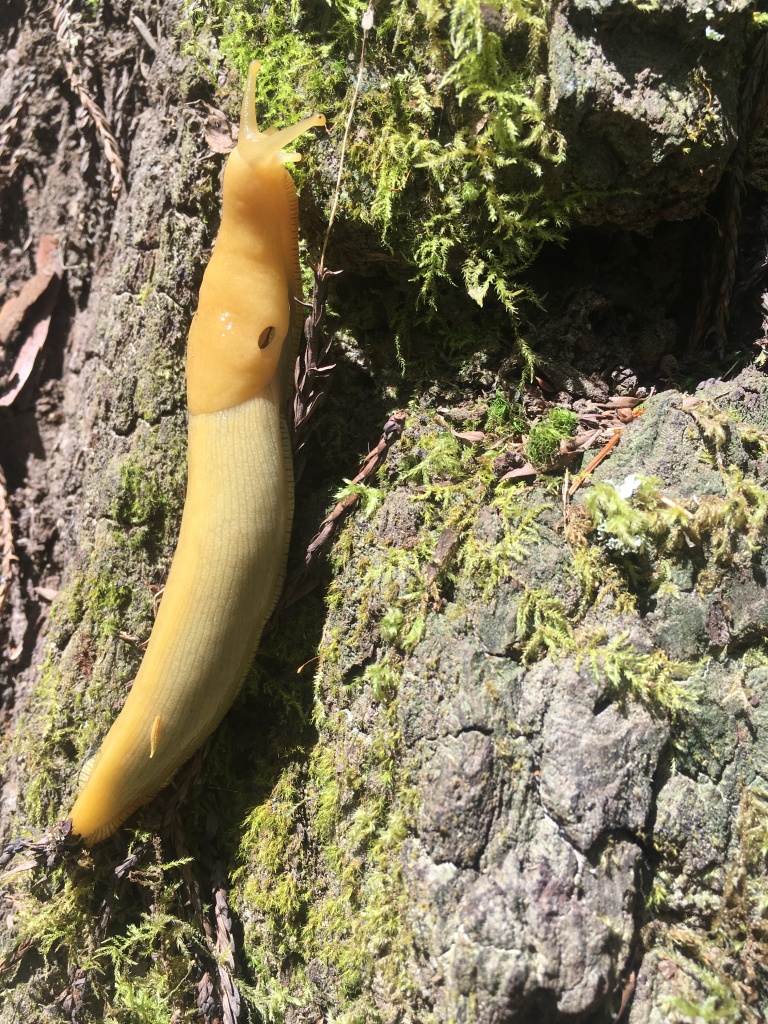
Banana Slug 
Just a snail on a redwood 
Banana Slug on Giant Parsnip Flower 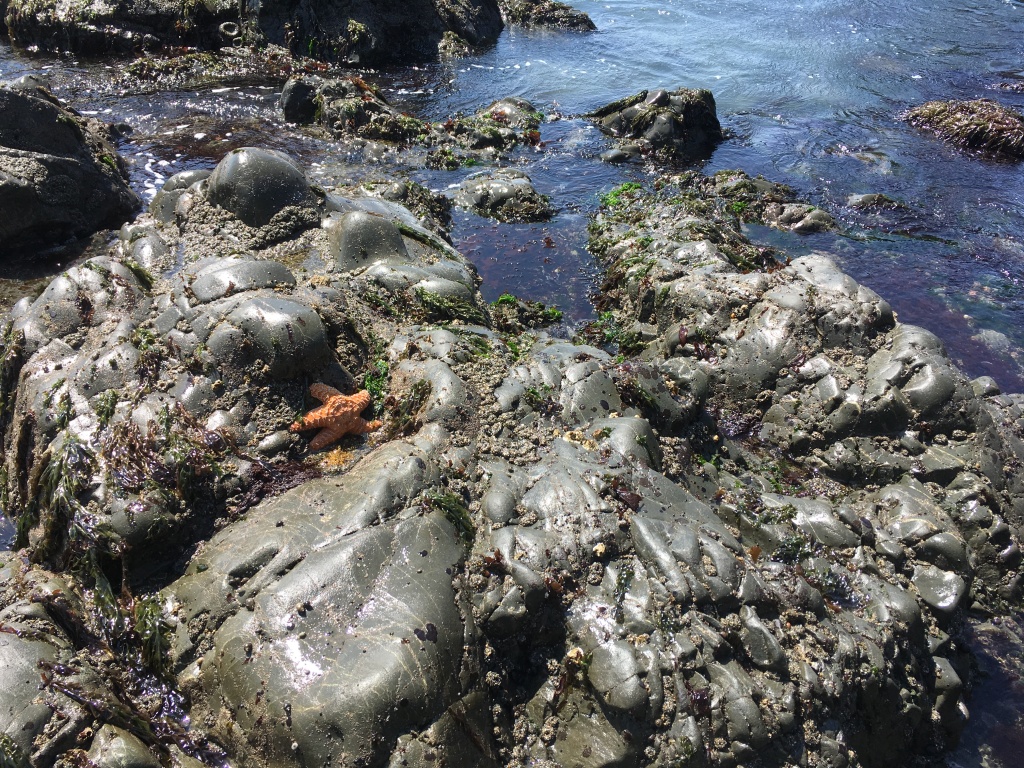
Starfish 
Roosevelt Elk 
Sea Lions 
We saw 4 river otters floating on their backs down this portion of the Smith River. We watched as they emerged and portaged the rapids.
Accidental Perfect Location
You may be wondering how it is we saw sea lions and star fish on our trip to the redwoods. Our visit was to the Coast Redwoods, to visit Sequoia sempervirens. These tallest living beings on the planet live along the Pacific coast of southern Oregon and Northern California. They need the ocean mists to provide supplemental water and the fogs to keep the humidity up and the soils moist. They will not live outside of these conditions. They may survive This is in comparison to the Giant Redwoods, Sequoiadendron giganteum which are not quite as tall but wider than the Coast Redwoods, known as the most massive trees on Earth, and thrive inland limited to the Western Sierra Nevadas in California.
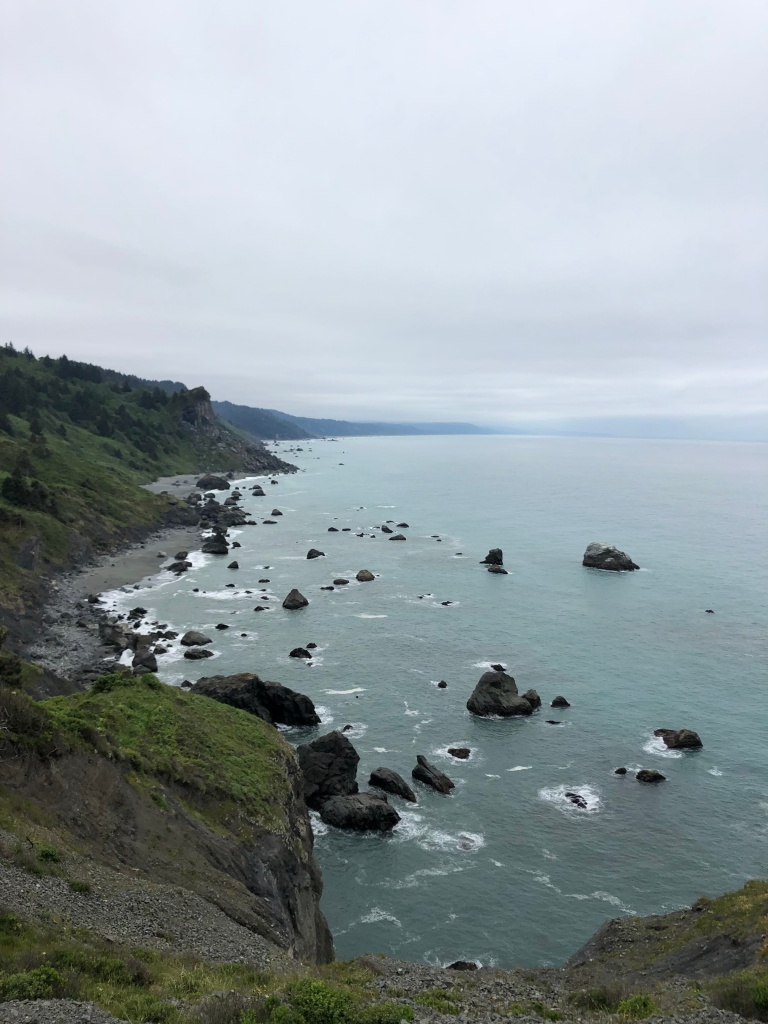
What I didn’t know when I selected our amazing cabin using VRBO for the first time, was that it was in the perfect location for a plant-nerd like me and an off-road enthusiast like my companion. Turns out the 15 acre property with the middle fork of the Smith River running right through it, is surrounded by thousands of acres of the Smith River National Recreation Area. There are no tourist shops there. There is no place to get a t-shirt or any branded cardboard cutouts for your instagram selfie. Where we were there were just various ecosystems, crowdless trails and enormous trees and tiny wildflowers.

We could day trip from the top of a mountain to the sands of the ocean. We hiked, a most amazing hike, from the coast into the redwood forest, hiking 9.9 miles of a 10 mile hike before we saw another human being. Eating lunch on a bridge over a creek surrounded by 300 foot tall Coast Redwoods. And this type of exploring we did, each day.

We had a 4-wheel drive rental car because it was recommended by our cabin owner just to get in the driveway. We put it to good use. We traversed dusty switchbacks into the Six Rivers National Forest taking in the scenery from the mountain tops. Looking out at snow covered peaks and finding amazing wildflowers we had not seen int he redwood forests. Here, we found ourselves in a serpentine barren. Serpentine barrens have soils high in magnesium and low in other nutrients and are generally high in nickel. This combination makes for a unique plant community with many plants found only there.

Accidental Timing
As I was planning this vacation, I was concerned with just one thing – seeing these trees! Imagine my surprise and delight when, as we trekked various trails, I realized we were there during spring wildflower bloom time. This made for longer, slower hiking and an ever-growing appreciation for the endless patience and understanding of my hunny as I photographed E.V.E.R.Y.T.H.I.N.G in bloom.
Some of the Wildflowers in Different Ecosystems

Western Blue Bead Lily (Clintonia andrewsiana) 
Thimbleberry (Rubus parviflorus) 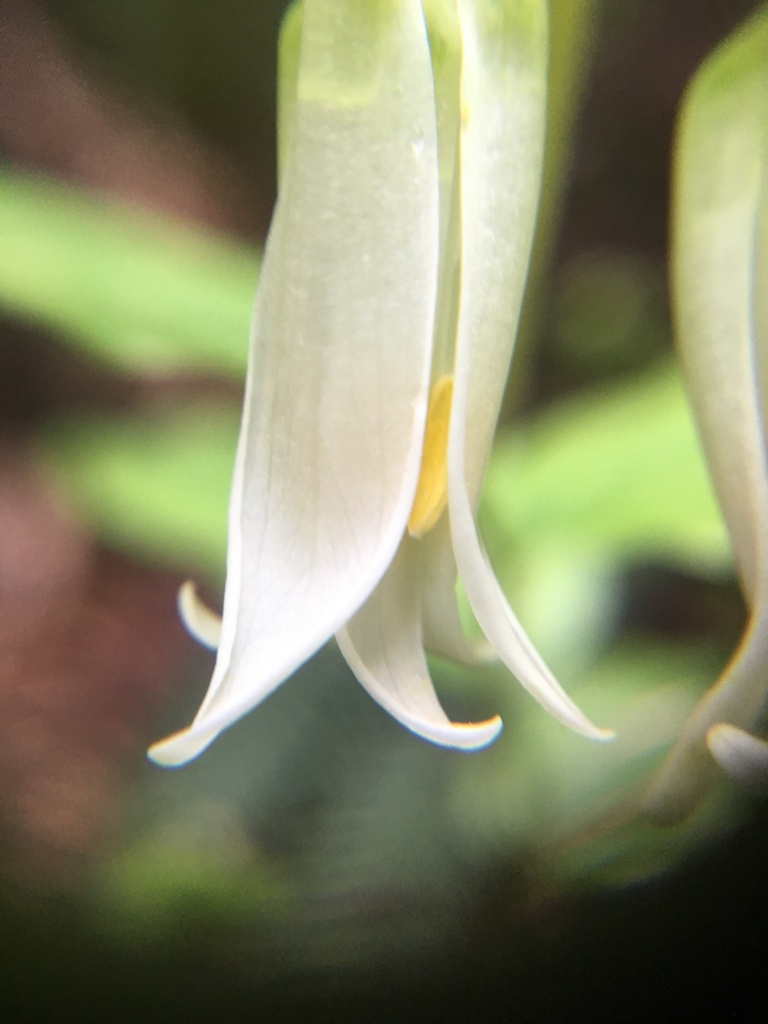
Smith’s Fairy Bells (Disporum smithii) 
Broad-Leaved Star-Flower (Trientalis latifolia) 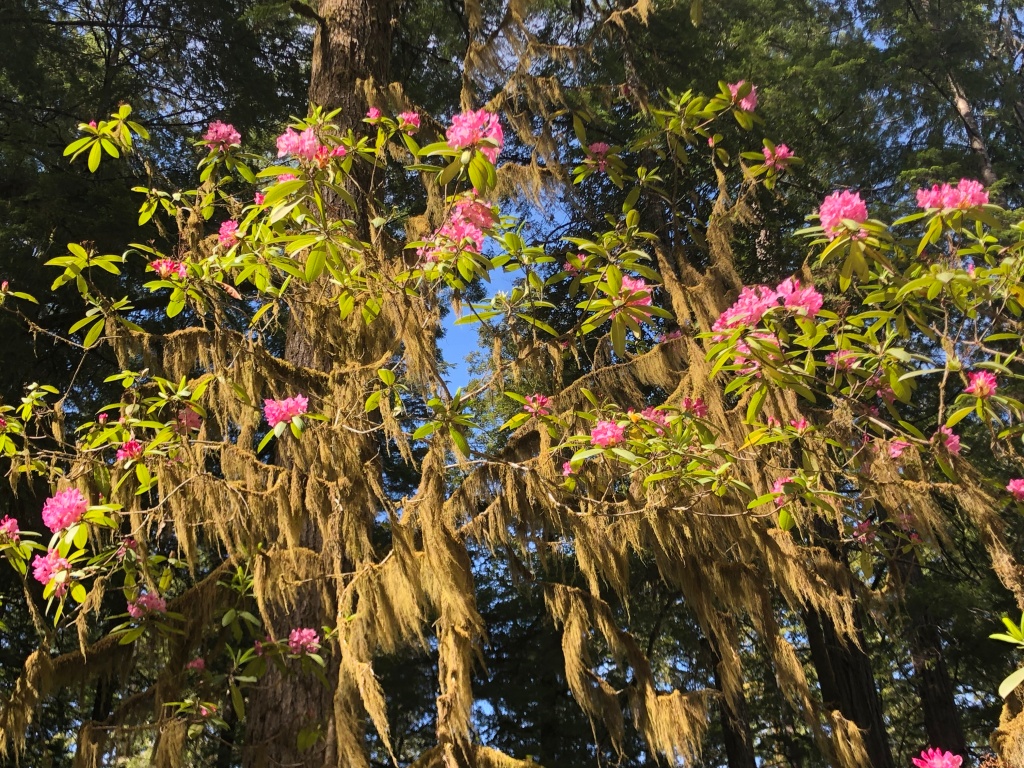
California Rosebay (Rhododendron macrophyllum) 
Coast Man-Root (Marah oregana) 
False Solomon’s Seal (Maianthemum racemosum) 
Redwood Sorrel (Oxalis 
Salal (Gaultheria shallon) 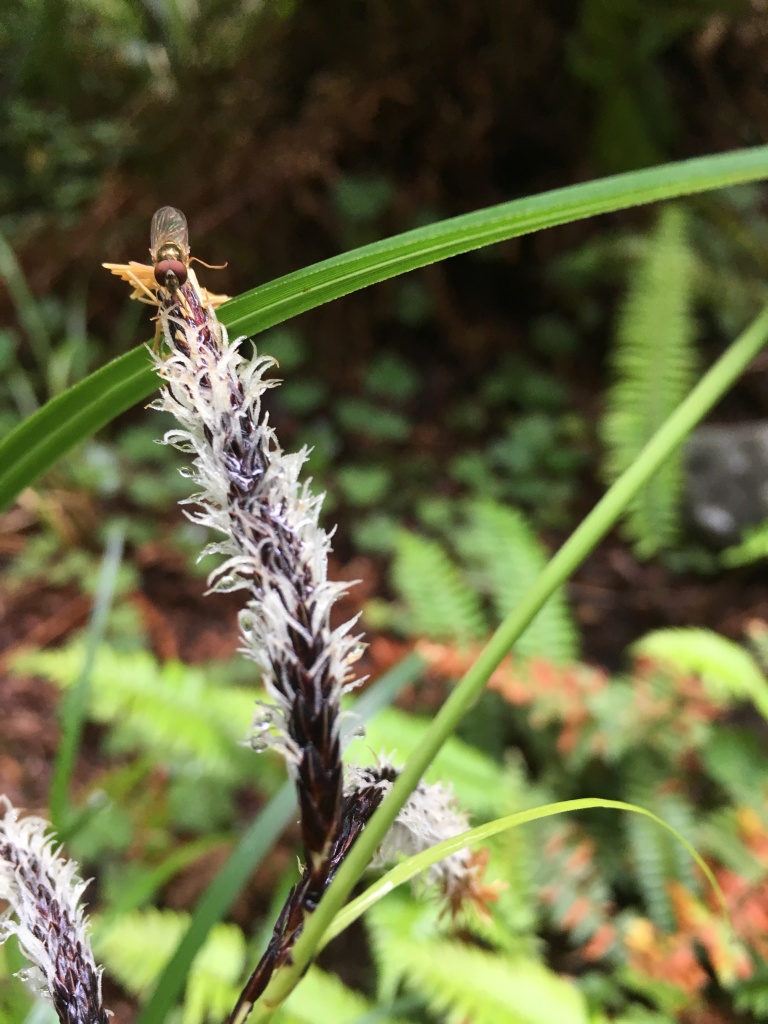
Carex sp. 
Giant Wakerobin (Trillium chloropetalum) 
Wild Pea (Vicia sp) 
Hooker’s Fairybells (Disporum hookeri) 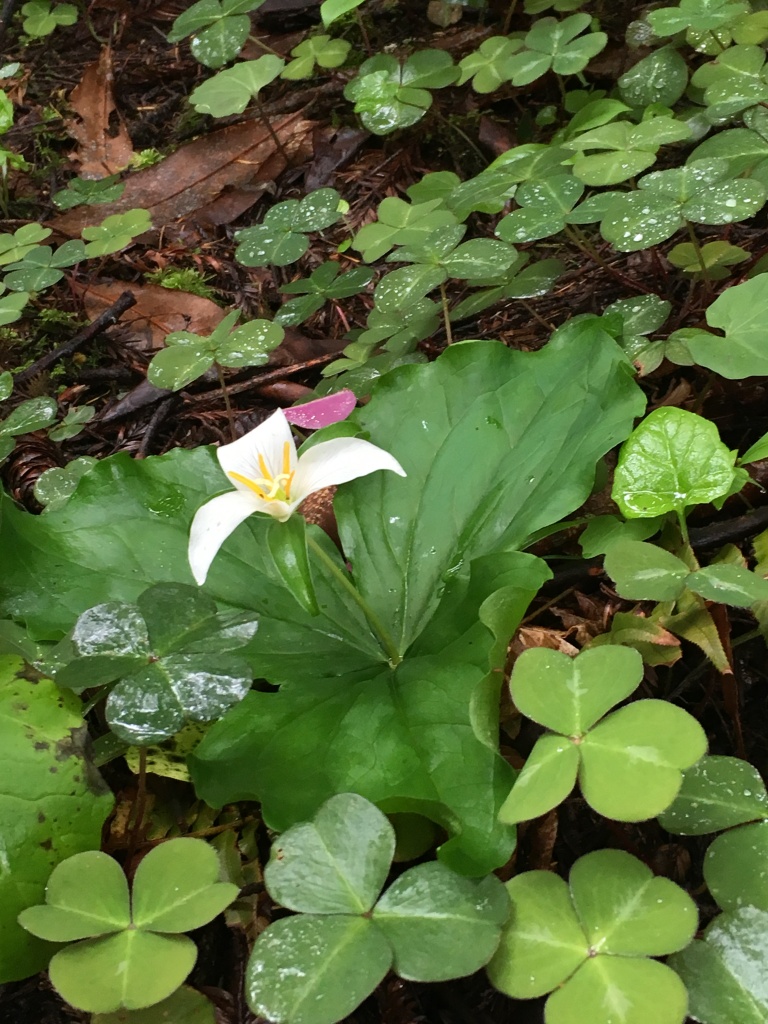
Western Trillium (Trillium ovatum) 
Cow Parsnip (Heracleum lanatum) 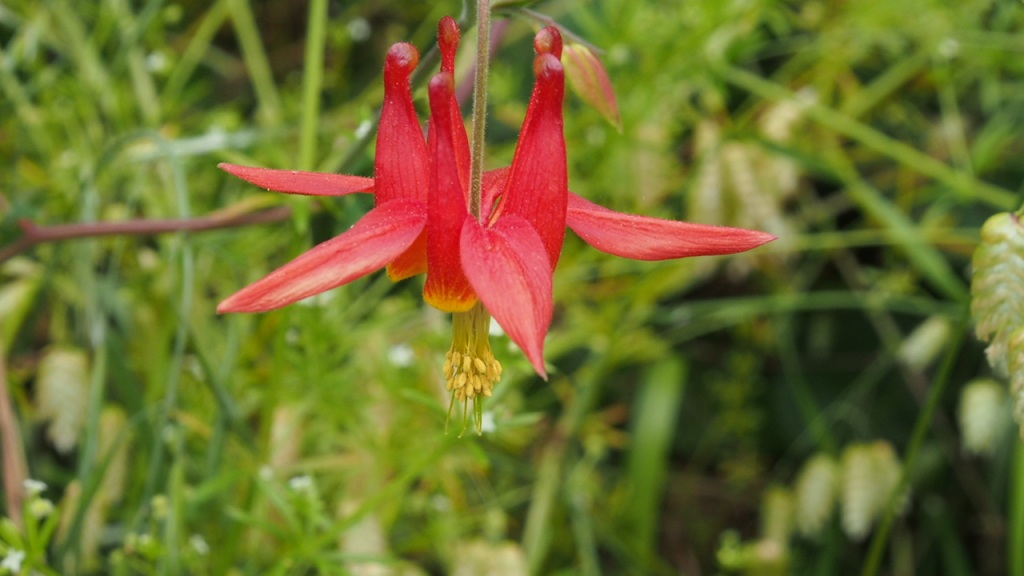
Western Columbine (Aquilegia formos) 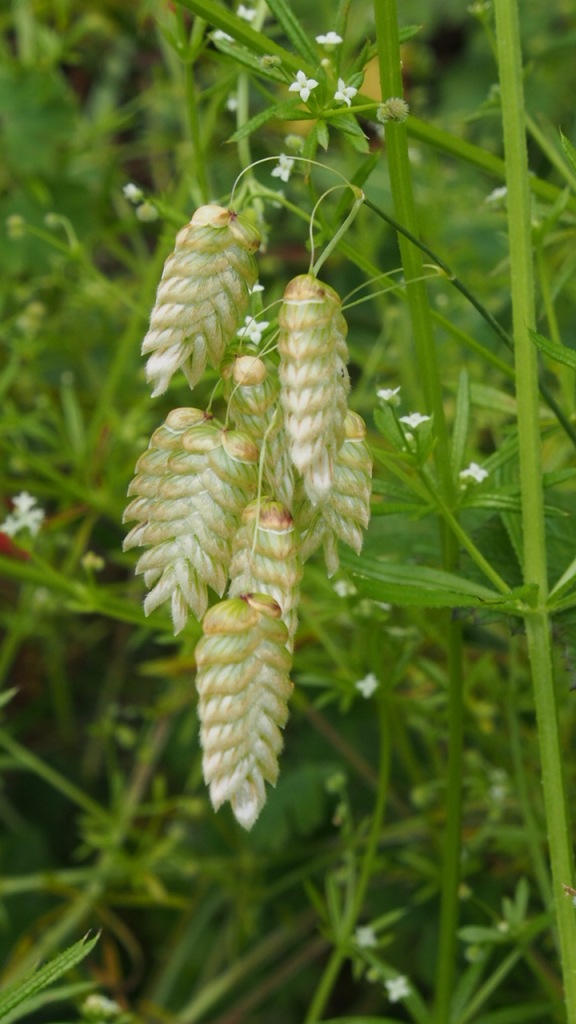
Rattlesnake Grass (Briza maxima) 
Sea Lettuce (Dudleya farinosa) 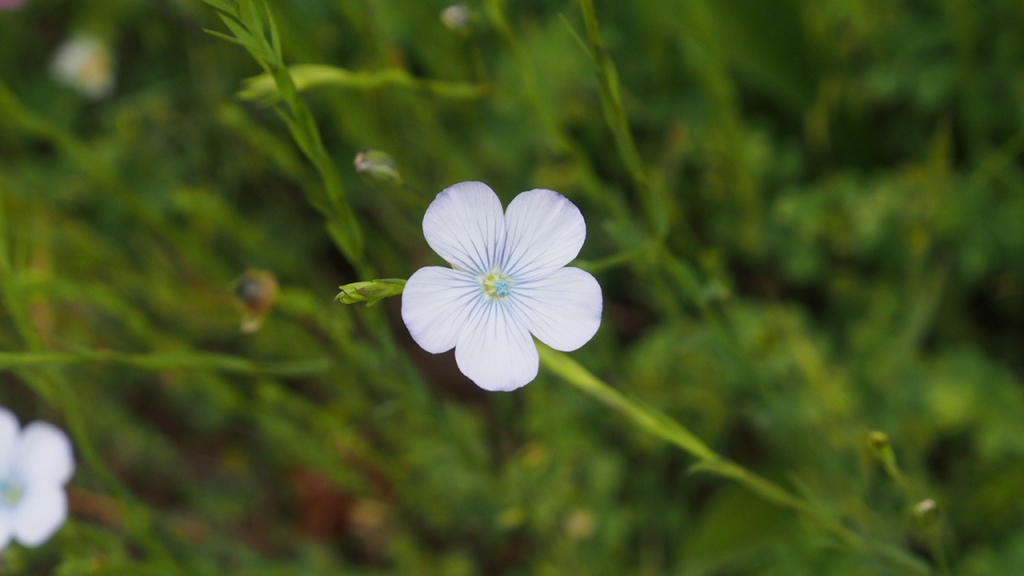
Flax (Linum bienne) 
Hill Lotus (Acmispon parviflorus) 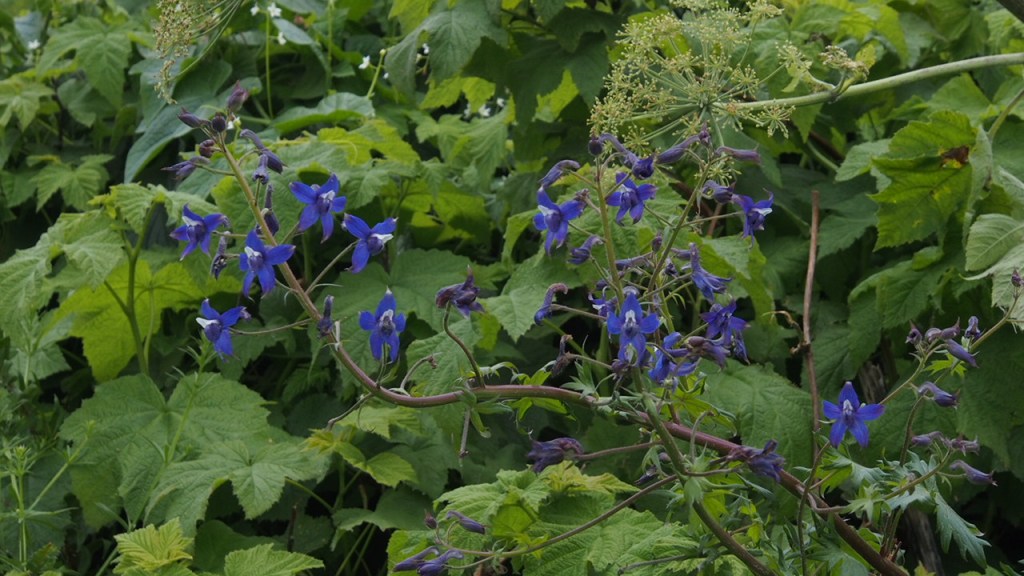
Tracy’s Larkspur (Delphinium decorum ssp. tracyi) 
Yellow Monkey Flower (Erythranthe guttata) 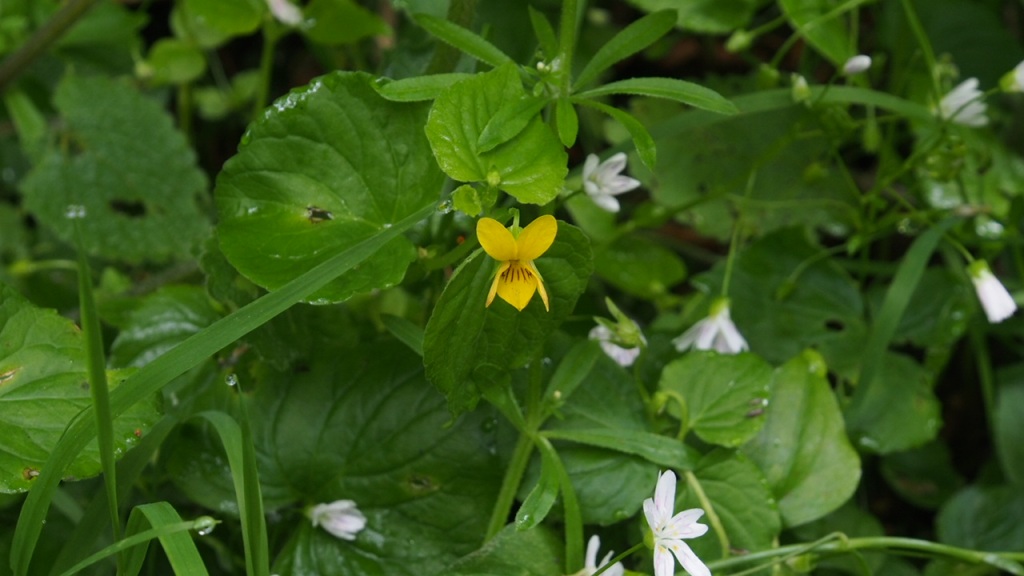
Stream Violet (Viola glabella) 
Douglas’ Iris (Iris douglasiana) 
California Tiger Lily (Lilium pardalinum) 
Fringe Cups (Tellima grandiflora) 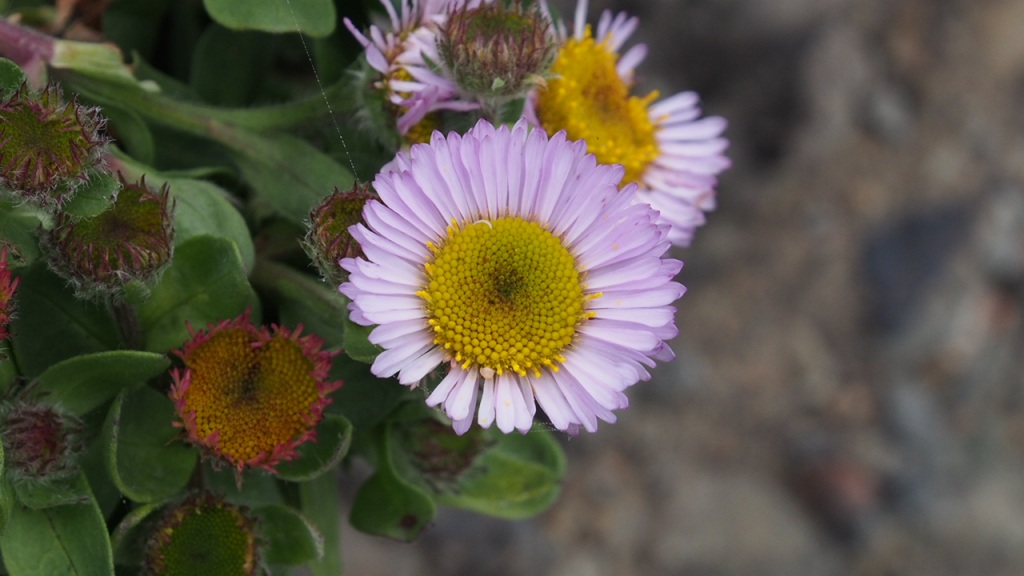
Seaside Daisy (Erigeron glaucus) 
Phlox sp. 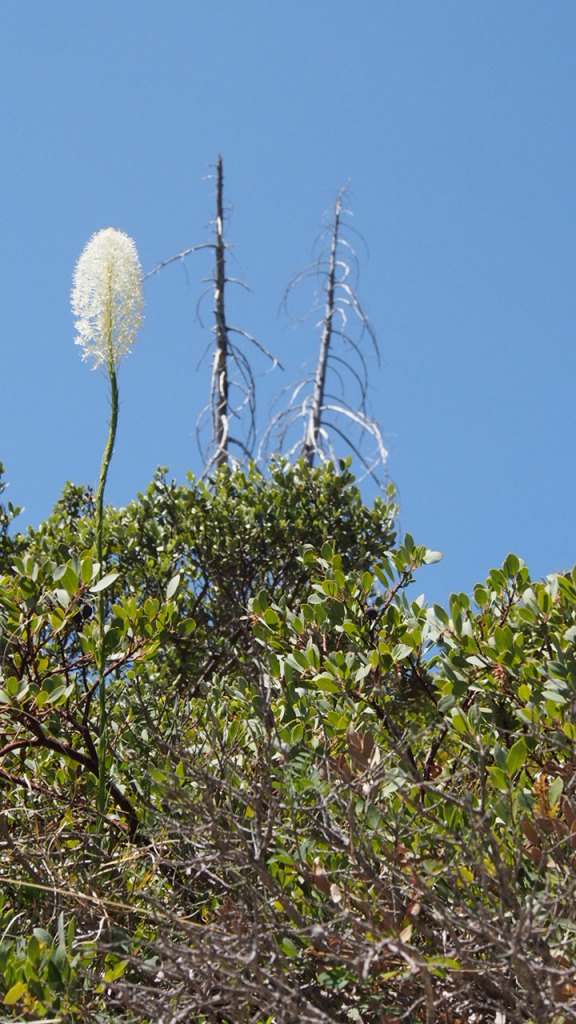
Common Beargrass (Xerophyllum tenax) 
Moose Horn Violet (Viola lobata) 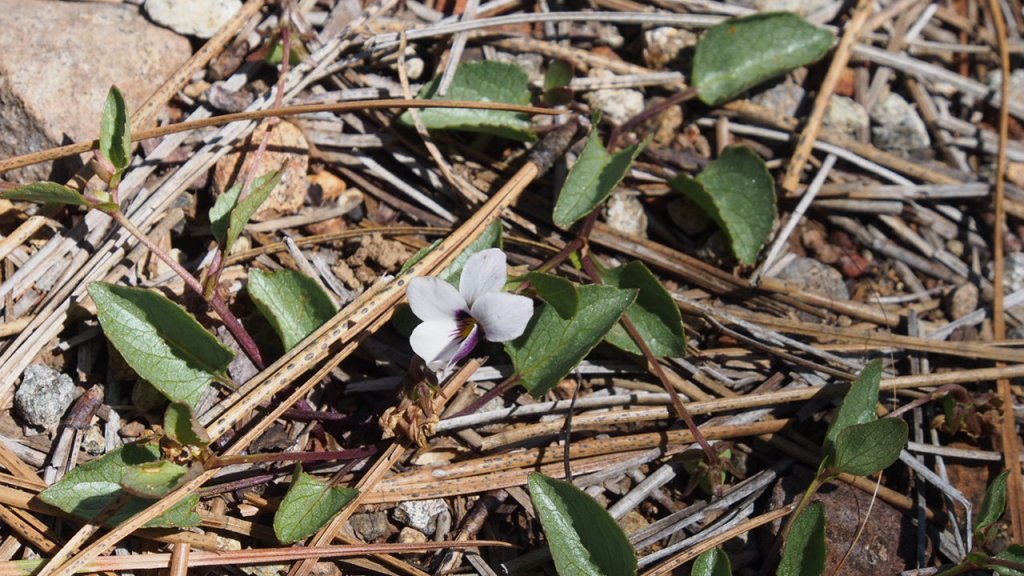
Northern Two-Eyed Violet (Viola cuneata) 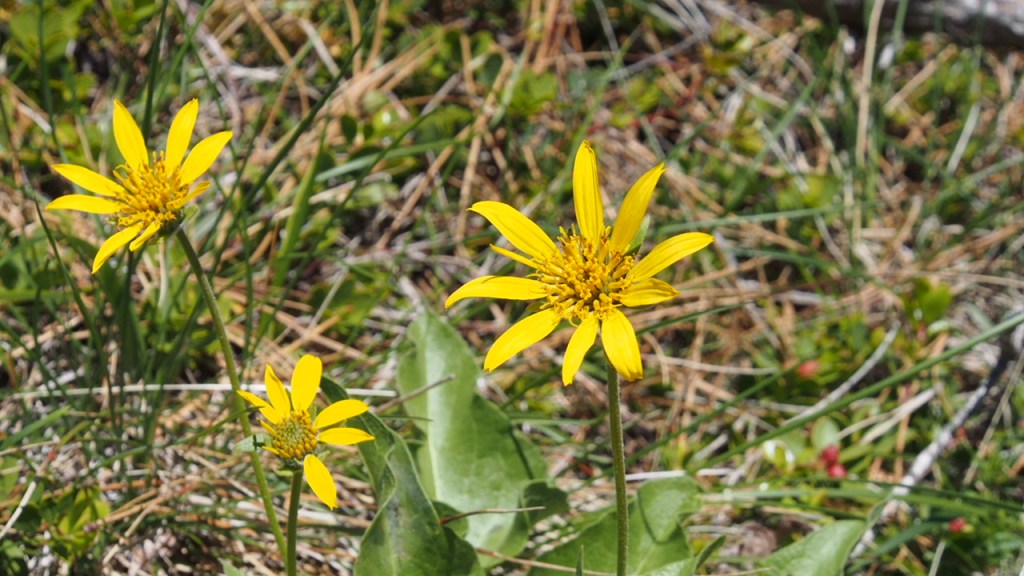
Mountain Arnica (Arnica latifolia) 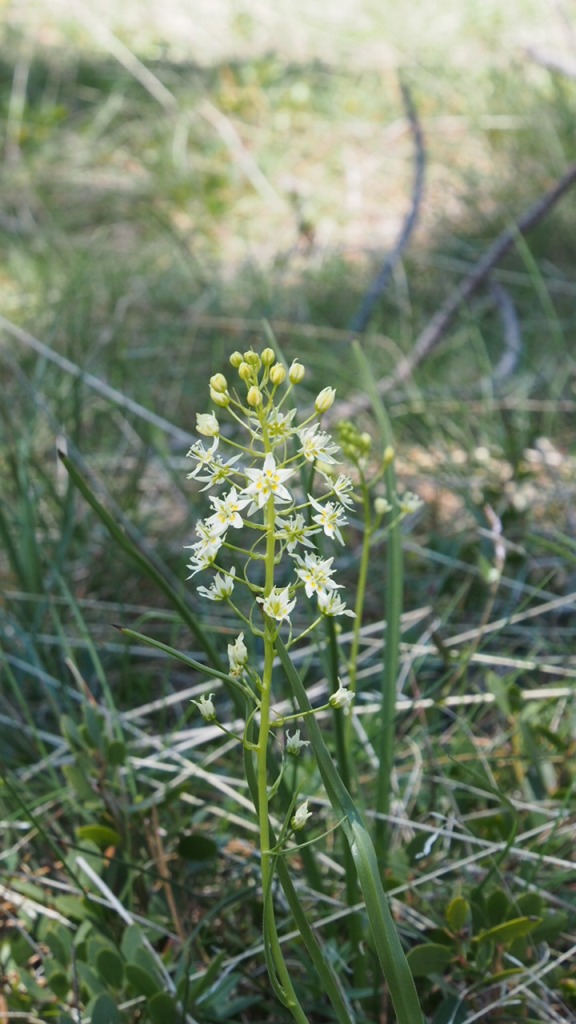
Fremont’s Deathcamas (Toxicoscordion fremontii) 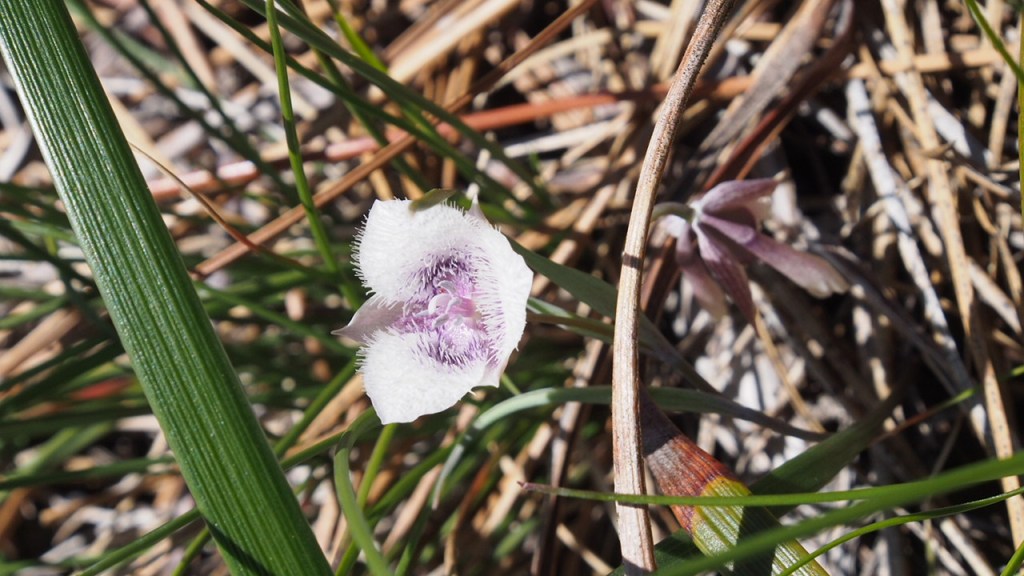
Pussy-Ears (Calochortus tolmiei) 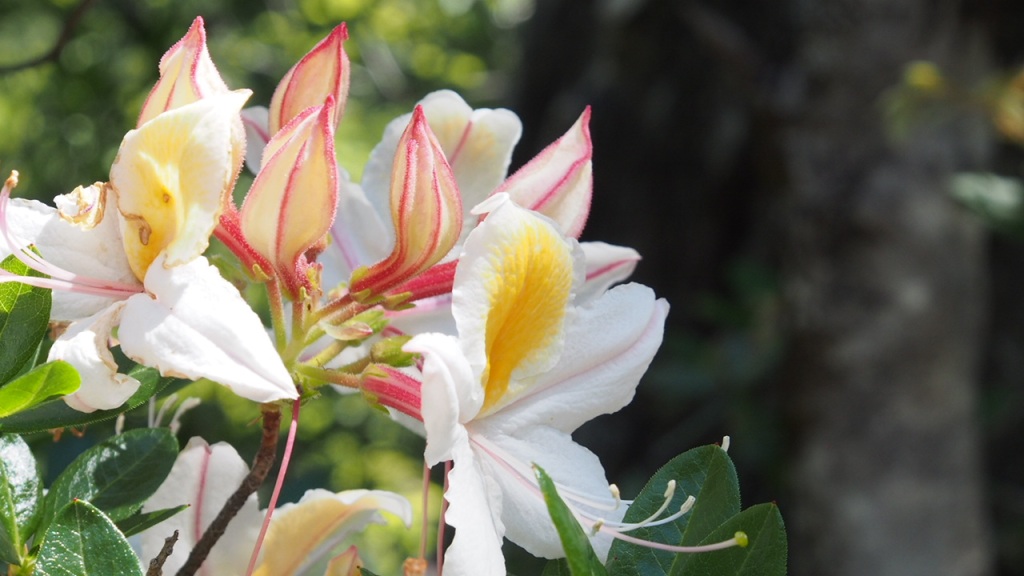
Western Azalea (Rhododendron occidentale) 
Bush Morning Glory (Calystegia occidentalis) 
Bush Morning Glory (Calystegia occidentalis) 
Fringed Cottongrass (Calliscirpus criniger) 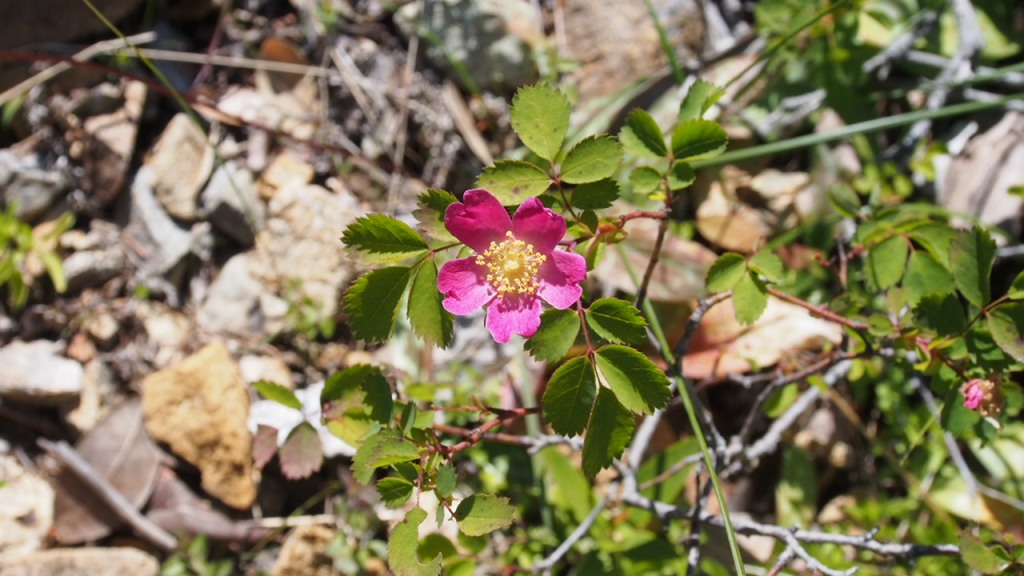
Wood Rose (Rosa gymnocarpa) 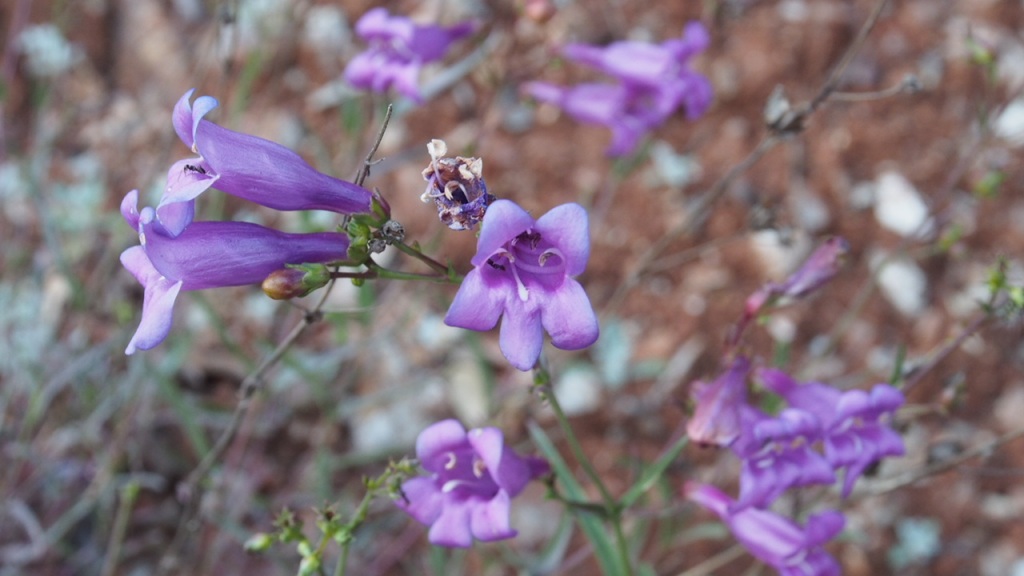
Foothill Penstemon (Pensetmon heterphyllus) 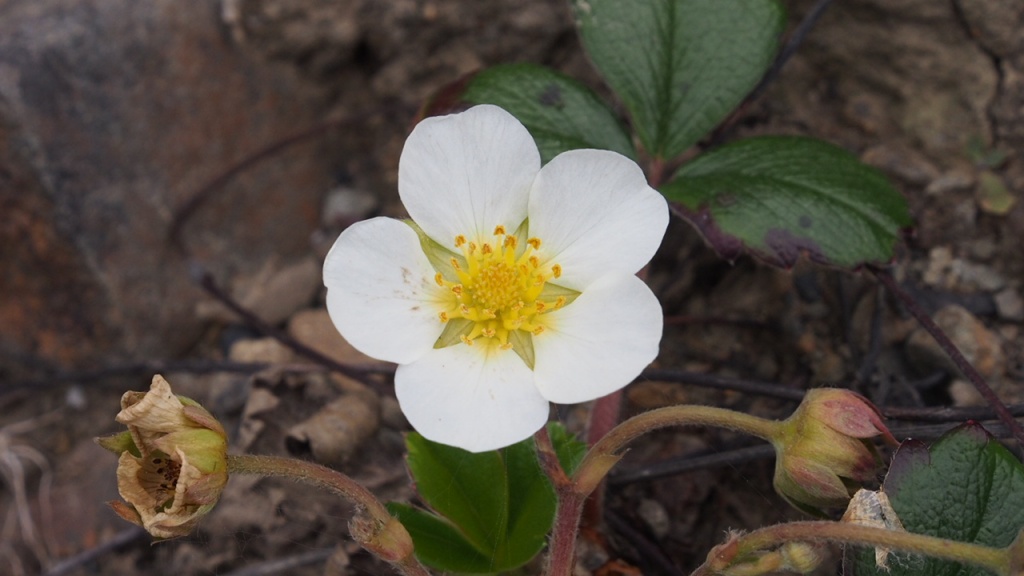
Beach Strawberry (Fragraria chiloensis)

Pingback: “Secrets are generally terrible.” | HORT travels
Pingback: Dead Inside | HORT travels
Pingback: Change Along the Perkiomen Trail | HORT travels
July 8, 2019 at 12:59 am
It is amusing to read what others say about the trees that we take for granted.
Their natural range barely extends into Oregon. It really is a Californian tree.
July 8, 2019 at 5:58 am
Thanks for stopping by again and reading Tony. It really was a life changing experience. Our hosts said they don’t even notice the trees and I couldn’t imagine that to be true but here you are reiterating that. Life moves too fast if we are not noticing things like the nature around us – wherever we are!
July 10, 2019 at 3:57 pm
As an arborist, I find that coastal redwoods are some of the more boring trees, not because they are unimpressive, but because they are so predictable. They are so stable that in my entire career, I have only inspected two (in landscape situations) that fell, and one of those two was expected to fall. They drop limbs, but in a very predictable pattern. Health problems are quite rare. they really do not give me much grief at all. I still appreciate them though, just because they are what grows in my home region. They have always been here.
July 7, 2019 at 11:54 am
Beautifully written! Thanks for sharing! You’ve motivated me to bump this up to the top of my list of places to visit!
July 8, 2019 at 5:59 am
Thank you for reading Julie! And for the nice compliment. If you’d like suggestions of where to stay and go I’ll share mine with you.